A mysterious object wrapped in canvas and spotted in a cellar has sparked an extraordinary detective story which P&J readers may be able to help solve.
Aberdeen man, deputy lieutenant Graham Guyan has a keen interest in military history.
He spotted the object lying forgotten in the corner of an undisclosed cellar in the city.
He asked to see it, and couldn’t have been more astonished at what was revealed.
It turned out to be a huge work of art, made from applique and embroidery, more than 6ft high and 7ft across.
In great detail, it depicts four men at sea, holding binoculars, scanning the horizon.
Graham said: “At first I thought it depicted fishermen in their sou’westers.
“I had a vague memory of seeing something similar at the back of the pulpit in the chapel at the old Fishermen’s Home several decades ago, and wondered if it was that.”
Puzzled
But the more he looked at it, the more puzzled he became.
These were no fishermen, this was no fishing vessel.
And this was no ordinary piece of stitched textile.
Graham said: “I couldn’t get over the detail worked into it, the facial muscles, the shadows, the reflections. To me, it is a masterpiece.”
Graham shared his discovery with other keen local historians, including with an interest in the world wars, including Barney Crockett and Colin Johnston.
The men gathered at the Gordon Highlanders Museum to take a closer look at the tapestry.
Investigating the stitching
Soon the talk was of this depicting a wartime submarine from the Arctic Convoy, and the historians generally agree that it’s a German one.
They were joined by textile expert Heather King of the Aberdeen Stitch and Textile Group.
Heather said there were no distinguishing marks on it which could identify the stitchers, and nothing to denote any particular geographical origin.
“The stitching is non-specific, worldwide.
“It could have been done by men as it’s lacking in a little finesse.
“It’s definitely not done by professionals, most likely a group of people.”
But where would they get the skills to make a work like this?
Heather said: “It wasn’t uncommon for sailors out at sea to stitch to pass the time. They used materials found onboard, mainly cotton, linen and wool for stitching.”
It’s definitely not done by professionals, most likely a group of people.”
As far as she can tell, the textiles are natural, like linen and cotton on a hessian backing.
She said: “The sky section looks to be a fabric loosely woven with a roughly spun wool as slubs are very evident.
“This would be very labour intensive, but it could have been done separately on a frame loom then applied to the base fabric which is more likely.
“The rest of the piece consists of applied cotton fabrics, with the embroidery almost entirely done by couching, laying down a thread and stitching over it with another thread.”
Heather thinks weaving was used to capture the shading on the faces, with the warp thread stitched onto the base fabric and the weft woven over and under these threads.
Creators could be from U-boat lost off Buchan
Colin Johnston of Culter was also blown away when Graham showed him the piece and set about finding out what he could.
It emerged the possible creators of the piece may have been surviving crew from a German U-boat lost off the north coast.
Stressing that the textile’s provenance is all conjecture at this stage, he said: “On April 14, 1945, off the Buchan coast, a U-boat 1206 was sunk off Cruden Bay with three lives lost, after being attacked by a fishing trawler.
“The remaining crew reached the safety of the coast.
“The captain, Kapitanleutnant Karl-Adolf Schlitte was sent to London for interrogation and ended up at a POW camp in Haltwhistle, Northumberland.
“Some of the crew were sent to Peterhead, and the remaining dozen or so sent to Tullos temporary POW camp in Aberdeen until about 1948.
Bored sailors
“The sailors were no doubt bored, and somehow acquired the materials needed for making a stitching, perhaps from local people with fishing or other maritime connections.
“They made it to commemorate their lost comrades, or perhaps all submariners lost in the war.
“They left it with fishing community contacts in Aberdeen, maybe with a view to coming back for it after the war.”
Unanswered questions
The simple but logical scenario still raises many unanswered questions.
There are no identifying marks on the piece to indicate that it depicts a U-boat, but the historians are convinced it is based on the depiction of the attack periscope, raised by U boats prior to attack.
It’s a very moving piece. You feel it was done as a tribute.”
There is nothing nationalistic about it, as there would almost certainly be in the same sort of piece if it had been made by the Allied victors.
No signatures have been detected in it.
Colin managed to track down a very similar image in Signal, a propaganda magazine for the German forces of the time, to which the POWs may have had access.
“Was it based on that?” he ponders. “It has so many identical features.
“And the white stripe across the background, could that have indicated Arctic snow? There were U boats in that area in the war.
“Kapitanleutnant Schlitte died in 2009, but he did come back after the war and visited the Tullos site.”
Graham Guyan said: “It’s a very moving piece.
“You feel it was done as a tribute.
“You can see the compassion, dedication and love in it.”
If you have information about the mystery stitching, please contact Colin Johnston on 07772 874696 or by email here
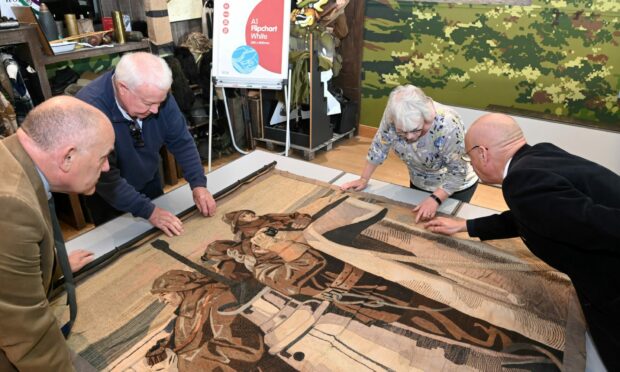
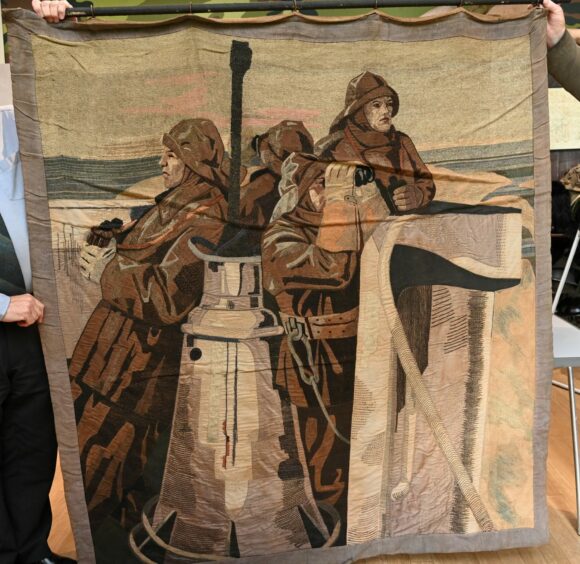
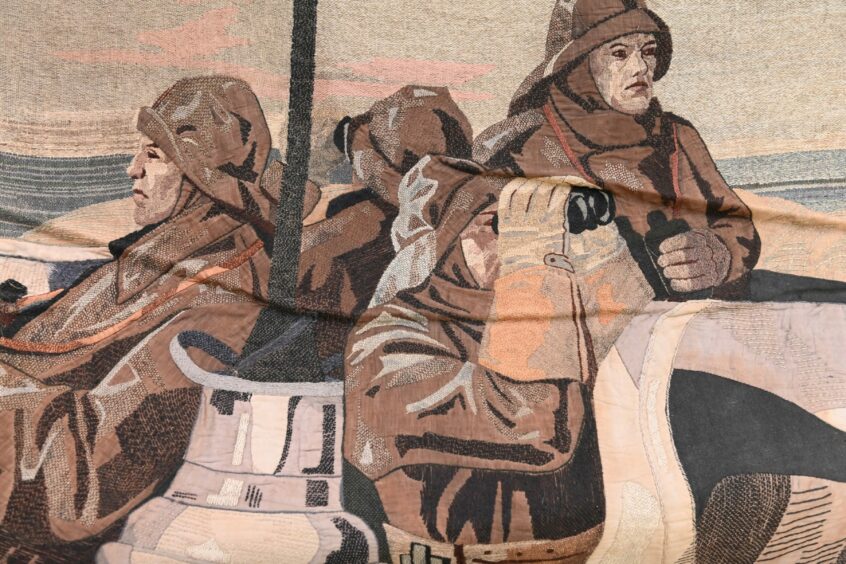
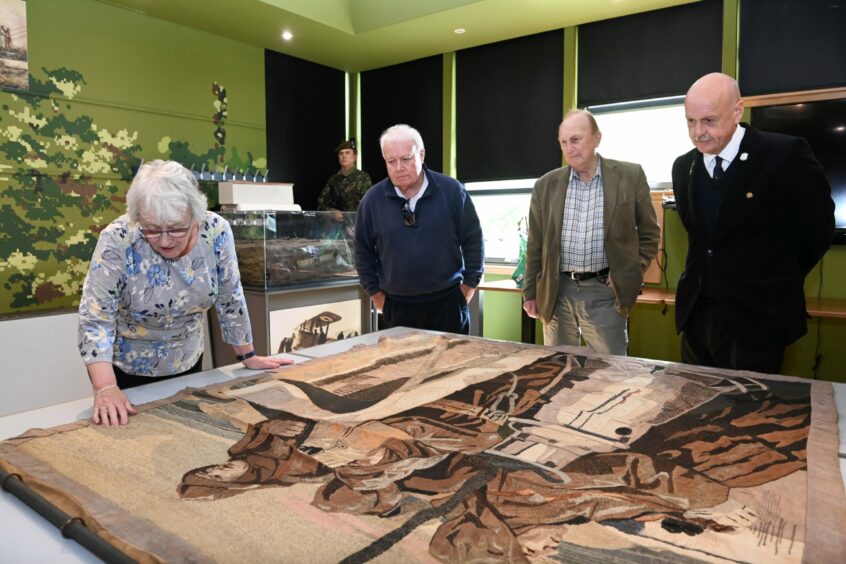
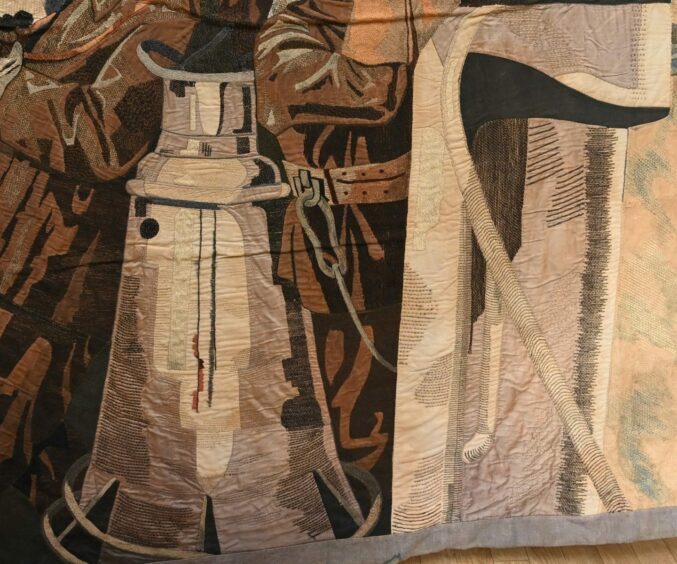
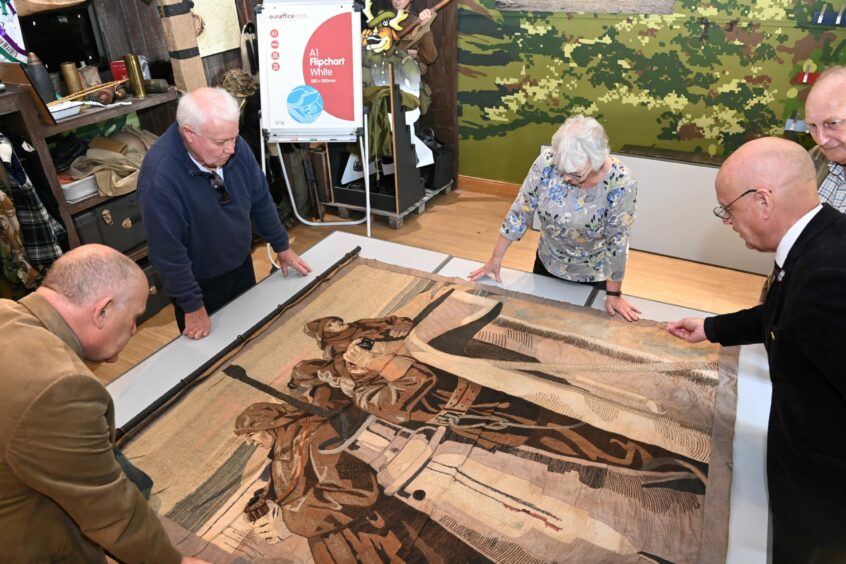
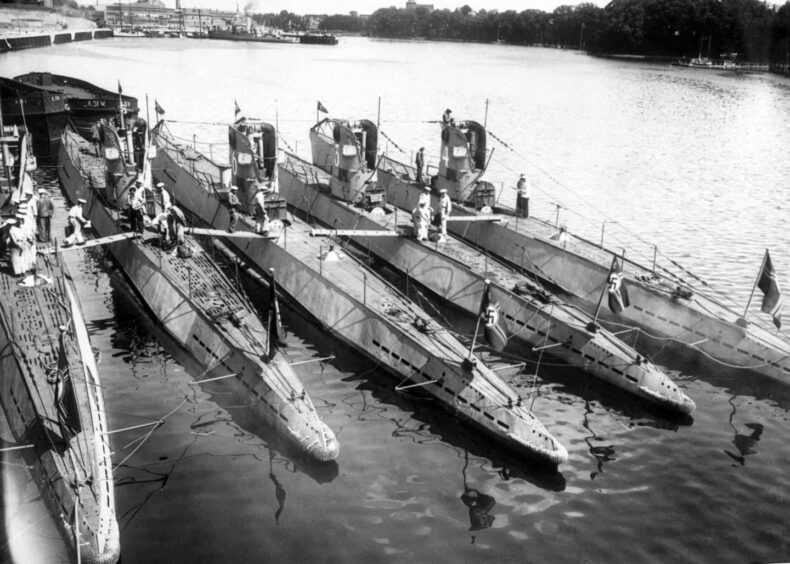
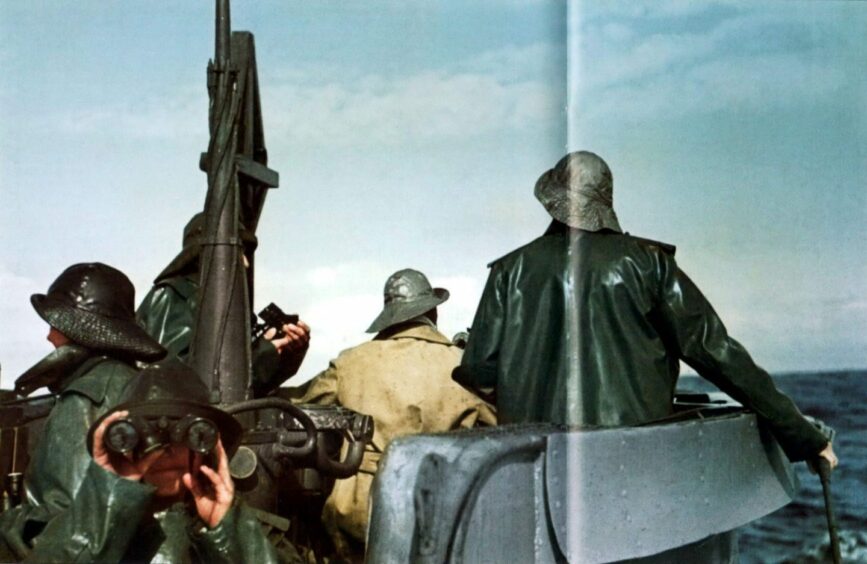
Conversation